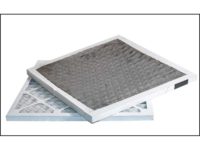I have a feature article published in this issue of Engineered Systems magazine, on Page 28, highlighting a project at the Watergate facility. I was brought onto this project by my longtime friend Dave Avedesian, P.E., RPA. Over the years, he and I have worked together on numerous problematic HVAC jobs, and I’ve enjoyed each challenge that comes with a troubled HVAC installation. I’ve gained a great deal of professional satisfaction while working with a team of others who are committed to reaching solutions.
Hindsight is always 20/20 when troubleshooting after the fact. Through these projects, I’ve learned a lot more about how many of these issues could have been avoided by simply starting with a system flow diagram.
That said, here are four tricks of the trade I have always used as an HVAC design engineer and a third-party engineer to troubleshoot a system that did not meet the client’s and/or design engineer’s expectations. These designer task recommendations, if followed, can keep the client, owner representative, or client’s lawyer from having to hire an engineer to investigate the HVAC problem.
I’ve discussed the topics in this column before on a few occasions but felt it was a good time to pull out this reminder in sync with my feature article that addresses several of these matters.
Create a Flow Diagram: I have always stressed to individuals I have been responsible for in engineering groups/departments to always start with a system flow diagram. The solution to the Watergate project started with a flow diagram. It doesn’t have to be pretty or documented using computer-aided drafting (CAD); it just has to capture the information necessary to step back and assess the overall system with pertinent data.
The designer should create a system flow diagram in the conceptual design phase of a project before a troubleshooting third-party engineer arrives.
Most of the time, it will be an X-Y axis freehand sketch, but other times, such is the case in the Watergate project, it was a system “riser” diagram that captured vertical heights and a change in system static pressure at each floor elevation reaching up to the highest point(s) in the hot water system.
Next, we inputted pressure drops when the system was operating. In the concept phase, the designer can create multiple system flow diagrams, insert/overlay estimated pressure drops on one diagram, and place electrical data on another diagram, etc.
Sequence of Operation at the Start: With the system flow diagram completed, a design engineer can now draft a sequence of operation in the concept phase, adding required automatic controls to the flow diagram, such as placing the pump head pressure control transmitter out in the system that will signal the pump variable frequency drive (VFD) to speed up or slowdown per this written sequence of operation For the Watergate assignment, I took my system flow diagram and coordinated the design intent sequence of operation.
Accurate System Flow Diagrams: Routinely, design engineers will have the benefit of one or more automatic control company’s CAD system flow diagram details with associated sequence of operations in the company’s document library. Using prepared flow diagrams is fine if the designer invests the time to review and edit the detail and its sequence of operation. Without a review, the sequence may not be applicable for the design intent of the project with the detail(s) misapplied. On one project I was troubleshooting, the contract documents showed a variety of humidifier diagrams based on different duct sizes. While reviewing the installation details, I found that none of these standardize details applied. This project didn’t have any duct-mounted humidifiers; it only had one very large humidifier in a new air-handling unit with a different sequence of operation.
A Picture Is Worth 1,000 Words: A side benefit of system flow diagrams is to overlay technical data, e.g., pump system pressure drops, air system pressure drops, automatic temperature control (ATC) points and devices, or electric data to mention four-system flow diagrams. Prior to the system startup, diagrams with data can be used by the HVAC contractor; testing, adjusting, and balancing technician; commissioning agent; and the facility operator to understand the design intent.
Otherwise, the third-party troubleshooting engineer will come in and create flow diagrams to establish what was engineered, identify what appears to be correct, note what does not add-up, and determine what will be needed to resolve a problematic installation after the fact.





